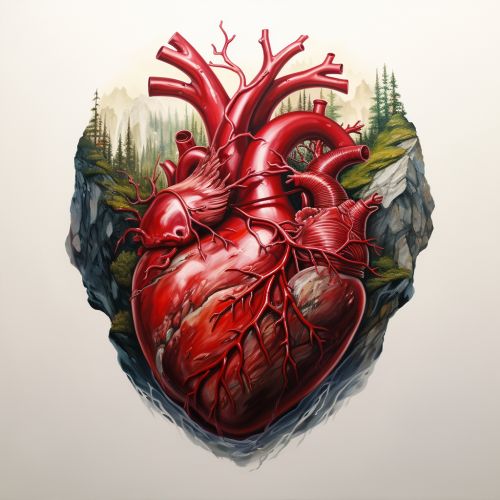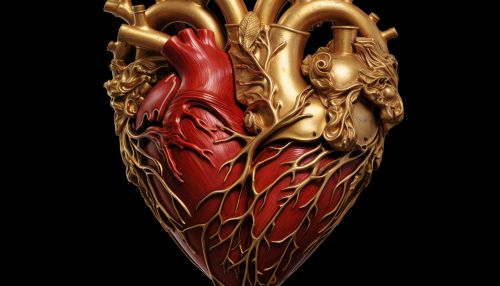Heart
Anatomy of the Heart
The heart is a muscular organ in most animals, which pumps blood through the blood vessels of the circulatory system. The pumped blood carries oxygen and nutrients to the body, while also assisting in the removal of metabolic wastes. In humans, the heart is approximately the size of a closed fist and is located between the lungs, in the middle compartment of the chest.


In humans, the heart is divided into four main sections or chambers - the left and right atria and the left and right ventricles. The atria are the two upper chambers that receive blood, while the ventricles are the two lower chambers that pump blood out of the heart to the lungs or other parts of the body.
Physiology of the Heart
The heart functions as a pump in the circulatory system to provide a continuous flow of blood throughout the body. This vast system of blood flow is often divided into two main circuits - the systemic and the pulmonary circulatory systems.
The systemic circulatory system transports oxygen-rich blood away from the heart to the body's tissues; the cells of the body use the oxygen and nutrients in the blood to carry out their vital functions. Deoxygenated blood returns to the heart via the systemic veins.
The pulmonary circulatory system is the portion of the cardiovascular system in which oxygen-depleted blood is pumped away from the heart, via the pulmonary artery, to the lungs for oxygenation. The oxygenated blood then returns to the heart via the pulmonary veins.
Heartbeat and Cardiac Cycle
The heartbeat is a vital process that ensures the continuous flow of blood throughout the body. It is regulated by the sinoatrial (SA) node, often termed the heart's natural pacemaker. The SA node initiates a wave of electrical activity, which spreads throughout the heart, causing it to contract.
The cardiac cycle refers to the sequence of events that occur when the heart beats. It consists of two main phases: diastole, when the heart ventricles are relaxed, and systole, when the ventricles contract. During diastole, the atria fill with blood from the body and lungs, and during systole, the ventricles contract, pumping blood to the lungs and the rest of the body.
Disorders of the Heart
There are many different types of heart diseases that can affect the heart's structure and function. These include coronary artery disease, heart failure, and cardiomyopathy.
Coronary artery disease is the most common type of heart disease and occurs when the arteries that supply blood to the heart muscle become hardened and narrowed due to the buildup of cholesterol and other materials, known as plaque, on their inner walls. This can lead to serious problems, including heart attack.
Heart failure, also known as congestive heart failure, occurs when your heart muscle doesn't pump blood as well as it should. Certain conditions, such as narrowed arteries in your heart (coronary artery disease) or high blood pressure, gradually leave your heart too weak or stiff to fill and pump efficiently.
Cardiomyopathy refers to diseases of the heart muscle. These diseases have many causes, signs and symptoms, and treatments. In cardiomyopathy, the heart muscle becomes enlarged, thick, or rigid, and in rare cases, the muscle tissue is replaced with scar tissue.
